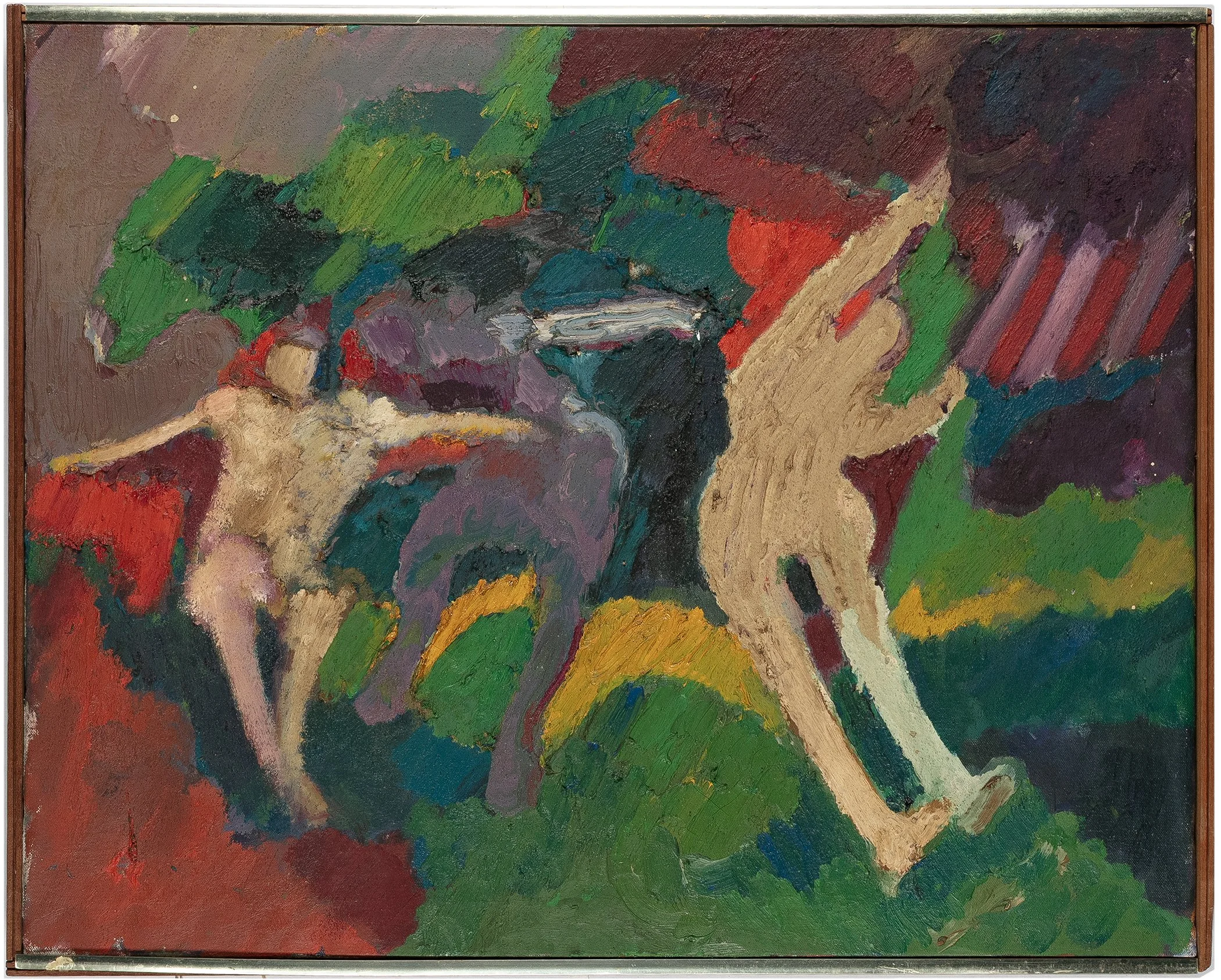
Emilio
Cruz
(1938-2004)
untitled
1980
pastel on peach colored paper
19-1/2 x 25 inches
signed and dated

Emilio Antonio Cruz was a Cuban-American polymath, artist, poet, playwright, performance artist, and musician who spent most of his life in New York City. Born in the Bronx on March 15, 1938, and shaped early by his father’s guidance as a trained artist, he cultivated a deep, lifelong engagement with myth, humanity, and the pulse of creative expression.
Cruz refined his craft at the Art Students League and The New School in NYC and later at the Seong Moy School of Painting and Graphic Arts in Provincetown, Massachusetts. Immersed in the avant‑garde scene of the late 1950s and ’60s, he collaborated with and was influenced by artists such as Bob Thompson, Lester Johnson, and Jan Müller, exploring a fusion of Abstract Expressionism with bold, figurative storytelling. Cruz's paintings offer expressive figuration and conjure mythic worlds. Human and animal forms intertwine with archaeological and mythological motifs, rendered in vivid color, gestural lines, and surreal undertones.
In 1968, Emilio and his wife Patricia moved to St. Louis, where Cruz directed the visual arts program at the Black Artists Group (BAG), aligning his creative output with social justice initiatives. The couple also participated in civil rights activism and rent strikes
During the 1970s, he taught at the School of the Art Institute of Chicago in an era marked by expansive experimentation in imagery and media. He also ventured into theater, writing and performing plays such as Homeostasis: Once More the Scorpion and The Absence Held Fast to Its Presence. These works played in New York’s Open Eye Theater in 1981 and later at international festivals in Europe.
Back in New York by the early 1980s, Cruz resumed his exhibitions and embraced teaching at institutions such as the Pratt Institute and New York University
Cruz’s work earned prestigious fellowships and awards, including from the John Hay Whitney Foundation, the Joan Mitchell Foundation, and the National Endowment for the Arts. His art has been exhibited widely - from solo shows at Zabriskie Gallery (1963) to the Studio Museum in Harlem (1987) and international festivals like the Bienal Internacional de Pintura in Ecuador (1994) .
Today, his work is found in the collections of major institutions such as the Museum of Modern Art, Studio Museum in Harlem, Smithsonian American Art Museum, National Museum of African American History and Culture, Hirshhorn Museum, Albright‑Knox Gallery, and Wadsworth Atheneum.
Emilio Cruz in his studio on the Lower East Side, New York City, 1965
Courtesy: Patricia Cruz
Dancers (Floating Figures)
c. 1965-1970
oil on canvas
24 x 30 inches
Zabriskie Gallery, New York, inventory number written in marker verso; also EC3; gum label adhered to original frame identifying artist, title, and inventory number
untitled
1975
charcoal drawing on cream paper
28 x 19 inches (image)
signed, dated, and dedicated: To Jim, Snow and Sunlight
Two Figures
1965
pastel on paper
10 x 13-3/4 inches (image)
signed and dated; label verso from Zabriskie Gallery